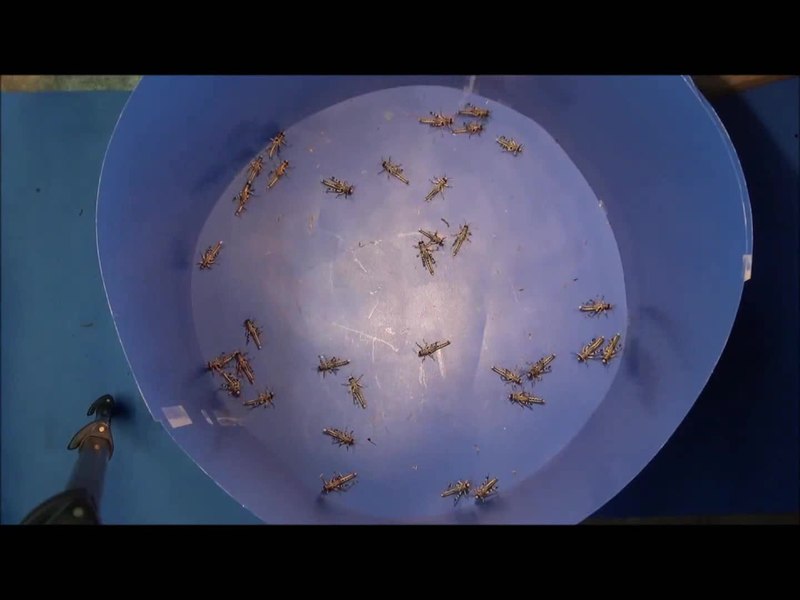Go motion is a variation of stop motion animation which incorporates motion blur into each frame. It was co-developed by Industrial Light & Magic and Phil Tippett.
History

Ladislas Starevich started using this technique by the time he started making films in France (1920's). He moved the puppet or the set during the expose of the frame to create motion blur. Some of this can be seen in films like "The midnight wedding", "Love in black in withe","The voice of the Nightingale" or "La Petite Parade" and more extensively in the battle scene of "The queen of the butterflies"(1924) and "Fétiche mascotte"(1933). Phil Tippett and Industrial Light & Magic later recreated the go motion technique for some shots of the tauntaun creatures and AT-AT walkers in the 1980 Star Wars film The Empire Strikes Back. After that, go motion was used for many other movies: for the dragon in Dragonslayer (1981), the dinosaurs in the prehistoric documentaries Prehistoric Beast (1984) and Dinosaur! (1985), the lord demon creature in Howard the Duck (1986), the winged demon in The Golden Child (1986), the Eborsisk dragon in Willow (1988), the RoboCop franchise (1987â€"1993) and Coneheads (1993). Other minor sequences using go motion appeared in films like the first three Indiana Jones installments (1981â€"1989) and E.T. the Extra-Terrestrial (1982) among a few others. In 1993, with the release of Jurassic Park, Tippett Studio abandoned go motion and fully converted its teams and equipment to CGI (computer-generated imagery). The last film using go motion was Coneheads (Jurassic Park was released on June 11, 1993 but Coneheads was released on July 23, 1993).
Technical explanation

Stop motion animation can create a disorienting, and distinctive staccato effect, because the animated object is perfectly sharp in every frame, since each frame of the animation was actually shot when the object was perfectly still. Real moving objects in similar scenes of the same movie will have motion blur, because they moved while the shutter of the camera was open.
Go motion was designed to simulate motion blur by moving the animated model slightly during the exposure of each film frame, instead of only between exposures as in traditional stop motion. This is usually created with the help of a computer, often through rods connected to the animation model, which the computer manipulates to reproduce movements programmed in by puppeteers.
Methods for creating motion blur

Petroleum jelly
This crude but reasonably effective technique involves smearing petroleum jelly ("Vaseline") on the camera lens, also known as vaselensing, then cleaning and reapplying it after each shot â€" a time-consuming process, but one which creates a blur around the model. This technique was used for the endoskeleton in The Terminator. This process was also employed by Jim Danforth to blur the pterodactyl's wings in Hammer Films' When Dinosaurs Ruled the Earth, and by Randal William Cook on the terror dogs sequence in Ghostbusters.
Bumping the puppet
Gently bumping or flicking the puppet before taking the frame will produce a slight blur, however care must be taken when doing this that the puppet does not move too much or that one does not bump or move props or set pieces.
Moving the table
Moving the table on which the model is standing while the film is being exposed creates a slight, realistic blur. This technique was developed by Ladislas Starevich , when their characters run, the set goes on the opposite direction ( this is seen in "La petite parade", the chase of the ballerina by the devil", "The eyes of the dragon","The magical Clock" and "The Mascot". Aardman animation used this for the train chase in The Wrong Trousers and again during the lorry chase in A Close Shave. In both cases the cameras were moved physically during a 1-2 second exposure. The technique was revived for the full-length Wallace and Gromit: The Curse of the Were-Rabbit.
Go motion
The most sophisticated technique was originally developed for the film The Empire Strikes Back and used for some shots of the tauntauns and was later used on films like Dragonslayer and is quite different from traditional stop motion. The model is essentially a rod puppet. The rods are attached to motors which are linked to a computer that can record the movements as the model is traditionally animated. When enough movements have been made, the model is reset to its original position, the camera rolls and the model is moved across the table. Because the model is moving during shots, motion blur is created.
A variation of go motion was used in E.T. the Extra-Terrestrial to partially animate the children on their bicycles.
Go motion today

Go motion was originally planned to be used extensively for the dinosaurs in Jurassic Park, until Steven Spielberg decided to try out the swiftly developing techniques of computer-generated imagery instead.
Today, the mechanical method of achieving motion blur using go motion is rarely used, as it is more complicated, slow, and labor-intensive than computer generated effects. However, the motion blurring technique still has potential in real stop motion movies where the puppet's motions are supposed to be somewhat realistic. Motion blurring can now be digitally done as a post production process using special effects software such as After Effects, Boris FX, Combustion, and other similar software.

Posting Komentar